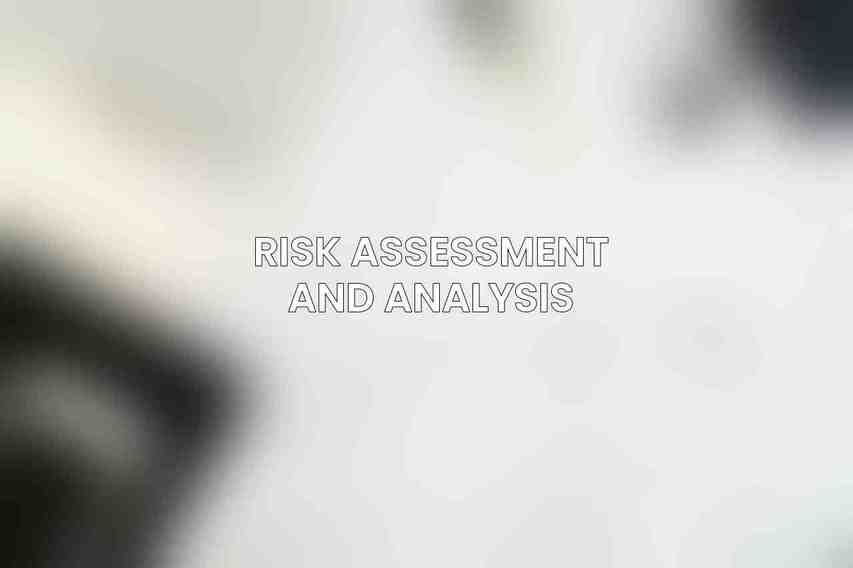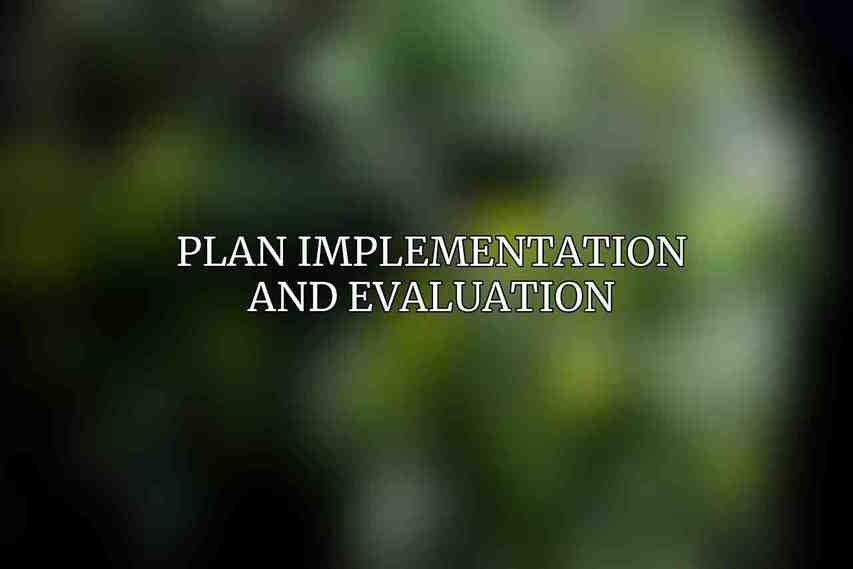Physical security planning is an essential aspect of safeguarding your business, employees, assets, and information against various threats. By implementing a comprehensive physical security plan, businesses can enhance safety, mitigate risks, and ensure continuity of operations. The scope of a physical security plan encompasses a range of measures and protocols designed to protect physical assets and deter potential threats effectively.
Importance of physical security planning
Vandalism, unauthorized access, and other security breaches. Creating a secure environment not only safeguards physical assets but also contributes to the overall well-being and productivity of employees.
Benefits of implementing a physical security plan
The benefits of having a robust physical security plan include increased protection of assets, reduced risks of security incidents, improved response to emergencies, enhanced compliance with regulations, and bolstered reputation among clients and stakeholders.
Risk Assessment and Analysis

To develop an effective physical security plan, conducting a thorough risk assessment and analysis is paramount. This process involves identifying potential threats and vulnerabilities that your business may face, including internal threats, external threats, and natural hazards.
Identify potential threats and vulnerabilities
- Internal threats: Risks originating from within the organization, such as employee misconduct or theft.
- External threats: Risks posed by external entities, such as burglaries, trespassing, or cyber attacks.
- Natural hazards: Risks arising from environmental factors like floods, fires, or earthquakes.
Evaluate the likelihood and impact of threats
By assessing the likelihood and impact of each identified threat, businesses can prioritize risks based on their severity and develop targeted security measures to address them effectively.
Security Controls
Security controls form the core components of a physical security plan and encompass measures designed to prevent, detect, and respond to security threats. These controls include access control, surveillance and monitoring, perimeter security, and emergency response protocols.
Access Control
- Physical barriers: Installation of fences, gates, and secure doors to restrict unauthorized access.
- Access control systems: Utilization of technologies like keycards and biometric readers to regulate entry.
- Visitor management procedures: Implementation of protocols to verify and track visitors within the premises.
Surveillance and Monitoring
- Closed-circuit television (CCTV) cameras: Deployment of cameras for real-time monitoring and recording of activities.
- Motion sensors and alarms: Installation of sensors to detect unauthorized movements and trigger alerts.
- Security personnel: Utilization of trained guards for on-site surveillance and response to incidents.
Perimeter Security
- Perimeter lighting: Illumination of external areas to enhance visibility and deter unauthorized access.
- Motion-activated surveillance cameras: Cameras that are triggered by motion to capture suspicious activities.
- Physical barriers: Construction of walls or fences to establish a clear boundary for the premises.
Emergency Response and Business Continuity
- Emergency response protocols: Establishing procedures for handling emergencies like fires, evacuations, or medical incidents.
- Business continuity plan: Developing strategies to ensure the continuity of essential business functions during and after a crisis.
- Disaster recovery plan: Planning for the recovery of data, systems, and operations following a disruptive event.
Security Personnel and Training
The effectiveness of security measures heavily relies on the competence and readiness of security personnel. Hiring qualified security staff and providing them with adequate training are crucial aspects of a robust physical security plan.
Hiring qualified security personnel
Recruiting individuals with relevant experience, training, and certifications ensures that your security team is equipped to handle various security challenges professionally.
Training security personnel on:
- Threat detection and prevention: Educating staff on identifying potential threats and implementing preventive measures.
- Emergency response procedures: Conducting drills and simulations to prepare security personnel for different emergency scenarios.
- Use of security equipment: Familiarizing staff with the proper operation of security technologies and equipment.
Regular drills and exercises
Organizing regular training sessions, drills, and exercises helps ensure that security personnel are proficient in their roles and ready to respond effectively to security incidents.
Physical Plant Security
Enhancing the security of the physical environment involves implementing measures that deter unauthorized access and enhance visibility for surveillance purposes.
Lighting for visibility and deterrence
Installing adequate lighting in and around the premises helps improve visibility during nighttime hours, reducing hiding spots for potential intruders and enhancing overall security.
Landscaping for security purposes
Strategic landscaping design can help deter intruders by removing potential hiding spots and maintaining clear sightlines for surveillance cameras and personnel.
Building design features for security
Such as reinforced doors and windows, access control points, and secure areas, contributes to overall physical security.
Key management and accountability
Implementing key control measures, such as restricted access to keys and regular audits of key usage, helps prevent unauthorized entry and enhance accountability for key management.
Security Documentation
Proper documentation of security-related information and procedures is essential for maintaining consistency and accountability in physical security operations.
Physical security plan
Developing a comprehensive physical security plan that outlines security measures, protocols, and responsibilities within the organization.
Standard operating procedures
Establishing standard operating procedures for various security scenarios ensures that security practices are consistently implemented and followed by all personnel.
Training records
Maintaining detailed records of security training sessions, drills, certifications, and performance evaluations to track the competency and readiness of security personnel.
Incident reports
Documenting all security incidents, breaches, and responses to create a historical record for analysis, improvement, and future prevention.
Plan Implementation and Evaluation

Executing the physical security plan requires a coordinated effort to ensure the efficient rollout, monitoring, and ongoing evaluation of security measures.
Rollout and implementation of the plan
Deploying security controls, conducting training sessions, and communicating security protocols to all stakeholders as part of the plan implementation process.
Regular monitoring and evaluation
Consistently monitoring security systems, conducting audits, and evaluating the effectiveness of security measures to identify areas for improvement and address emerging threats promptly.
Updates and revisions based on changing risks
Adapting the physical security plan based on evolving risks, new technologies, regulatory changes, and lessons learned from security incidents to maintain the plan’s relevance and effectiveness.
Physical Security Plan Template
To assist businesses in creating their physical security plans, downloadable templates are available for customization. These templates provide a structured framework to guide organizations in developing tailored security strategies.
Downloadable template for customizing a security plan
Access to templates that outline key components of a physical security plan and allow organizations to input specific details relevant to their operations and security needs.
Instructions on how to use the template
Guidance on filling out the template, customizing sections, and integrating additional elements to create a comprehensive and effective physical security plan.
Sample physical security plans
Examples of completed physical security plans that showcase best practices, diverse approaches, and industry-specific considerations to inspire and guide organizations in creating their own plans.
Expert Advice
Drawing from industry experts’ insights and experiences can provide valuable guidance for enhancing physical security practices and avoiding common pitfalls.
Best practices for physical security planning
Recommendations and strategies from security professionals on designing, implementing, and maintaining effective physical security plans tailored to business needs and risk profiles.
Common mistakes to avoid
Identifying and addressing common pitfalls, errors, and oversights in physical security planning to help businesses strengthen their security posture and better protect their assets and personnel.
Case studies and real-world examples
Exploring real-world scenarios, success stories, and lessons learned from businesses that have effectively implemented physical security measures to mitigate risks and safeguard their operations.
Businesses can create a robust physical security plan tailored to their unique needs and requirements. prioritizing physical security not only protects assets and personnel but also fosters a secure and resilient business environment in an ever-evolving threat world.
Frequently Asked Questions
What is the importance of a comprehensive physical security plan for a business?
A comprehensive physical security plan is crucial for protecting your business, employees, assets, and intellectual property from various threats such as theft, vandalism, and unauthorized access.
How do I begin creating a physical security plan for my business?
Start by conducting a thorough assessment of your business premises, identifying potential risks and vulnerabilities, and setting clear security objectives and goals.
What are some key components that should be included in a physical security plan?
Key components of a physical security plan may include access control systems, surveillance cameras, alarm systems, security personnel, perimeter security measures, and emergency response protocols.
How often should a physical security plan be reviewed and updated?
Physical security plans should be reviewed and updated regularly, at least annually or whenever there are significant changes to your business operations or security threat world.
Can I seek professional help in developing a physical security plan for my business?
Yes, it is advisable to consult with security experts or firms specializing in physical security to help you design and implement an effective security plan tailored to your business needs and budget.

